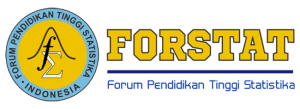Determinan Perilaku Merokok pada Remaja Sekolah di Indonesia
DOI:
https://doi.org/10.34123/jurnalasks.v9i1.93Keywords:
Tobacco, Smoking, School, Adolescent, IndonesiaAbstract
Smoking is a global public health concern and it imposes a heavy economic burden. However, the trend of smoking in Indonesia seems to be increasing and the magnitude of the problem affects not only adults but also adolescents. This paper identifies cigarette smoking determinants among school adolescents in Indonesia, using a multivariate binary logistic model. The analysis uses 5,986 samples of students from the 2014 Indonesia Global Youth Tobacco Survey (GYTS). The results show that 25% of the students have ever smoked and 15% of students are currently smoking. The students’ odds of smoking are higher for boys compared to girls. Higher risk of smoking is observed among the students who have closed-peer smoking compared to students who don’t have closed-peer smoking. Students whose one or both parents are smoking are more likely to smoke compared to whose parents are not smoking. Students who have seen their teacher smoking or have seen people smoking in their house and public places are more likely to smoke compared to who haven’t ever seen their teacher smoking or haven’t ever seen people smoking in their house and public places. These findings suggest that enforcement of legislations to decrease accessibility of cigarettes are necessary to curb the cigarette use among students. Beside that the interventions and education campaigns that target secondary school students are also needed.
Downloads
References
Bricker, J. B., Peterson, A. V., Andersen, M. R., Rajan, K. B., Leroux, B. G. dan Sarason, I. G. 2006. Childhood friends who smoke: Do they influence adolescents to make smoking transitions?. Addictive Behaviors, 31(5), 889–900. https://doi.org/10.1016/j.addbeh.2005.07.011
Elders, M. J., Perry, C. L., Eriksen, M. P. dan Giovino, G. A. 1994. The report of the surgeon general: Preventing tobacco use among young people. American Journal of Public Health, 84(4), 543–547. https://doi.org/10.2105/AJPH.84.4.543
Foraker, R. E., Patten, C. A., Lopez, K. N., Croghan, I. T., & Thomas, J. L. 2005. Beliefs and attitudes regarding smoking among young adult Latinos: a pilot study. Preventive Medicine, 41(1), 126–133. https://doi.org/10.1016/j.ypmed.2004.10.018
Gilliland, F. D., Islam, T., Berhane, K., Gauderman, W. J., McConnell, R., Avol, E., & Peters, J. M. 2006. Regular Smoking and Asthma Incidence in Adolescents. American Journal of Respiratory and Critical Care Medicine, 174(10), 1094–1100. https://doi.org/10.1164/rccm.200605-722OC
Global Youth Tobacco Survey Collaborating Group. 2003. Differences in Worldwide Tobacco Use by Gender: Findings from the Global Youth Tobacco Survey. Journal of School Health, 73(6), 207–215. https://doi.org/10.1111/j.1746-1561.2003.tb06562.x
Goodchild, M., Nargis, N., & Tursan d’Espaignet, E. 2017. Global economic cost of smoking-attributable diseases. Tobacco Control, tobaccocontrol-2016-053305. https://doi.org/10.1136/tobaccocontrol-2016-053305
Hou, X., Xu, X. dan Anderson, I. 2015. Determinants of tobacco consumption in Papua New Guinea?: challenges in changing behaviors, 2(2), 1–23. https://doi.org/10.1002/app5.85
Kleinbaum, D. G. dan Klein, M. 2010. Logistic regression?: a self-learning text. Springer.
Rachmat, Muhammad., Thaha, Ridwan Mochtar., Syafar, M. 2013. Perilaku Merokok Remaja Sekolah Menengah Pertama. Jurnal Kesehatan Masyarakat Nasional, 7(11), 502–508. https://doi.org/10.21109/kesmas.v7i11.363
Reda, A. A., Moges, A., Yazew, B. dan Biadgilign, S. 2012. Determinants of cigarette smoking among school adolescents in eastern Ethiopia: a cross-sectional study. Harm Reduction Journal, 9(1), 39. https://doi.org/10.1186/1477-7517-9-39
Ribeiro Sarmento, D. dan Yehadji, D. 2015. An analysis of global youth tobacco survey for developing a comprehensive national smoking policy in Timor-Leste. BMC Public Health, 16(1), 65. https://doi.org/10.1186/s12889-016-2742-5
Rudatsikira, E., Dondog, J., Siziya, S., & Muula, A. S. 2008. Prevalence and determinants of adolescent cigarette smoking in Mongolia. Singapore Medical Journal, 49(1), 57–62. Retrieved from http://www.ncbi.nlm.nih.gov/pubmed/18204771
Sreeramareddy, C. T., Kishore, P., Paudel, J., & Menezes, R. G. 2008. Prevalence and correlates of tobacco use amongst junior collegiates in twin cities of western Nepal: A cross-sectional, questionnaire-based survey. BMC Public Health, 8(1), 97. https://doi.org/10.1186/1471-2458-8-97
TCSC-IAKMI. 2014. Bunga Rampai : Fakta Tembakau dan Permasalahannya. Kemenkes RI. Jakarta
WHO. 2014. WHO | Research for universal health coverage: World health report 2013. WHO. World Health Organization.
WHO. 2015. Global Youth Tobacco Survey (GYTS): Indonesia report 2014. Who-Searo. https://doi.org/http://www.searo.who.int/tobacco/documents/ino_gyts_report_2014.pdf
WHO | Health effects of smoking among young people. 2011. WHO. Retrieved from http://www.who.int/tobacco/research/youth/health_effects/en/
















